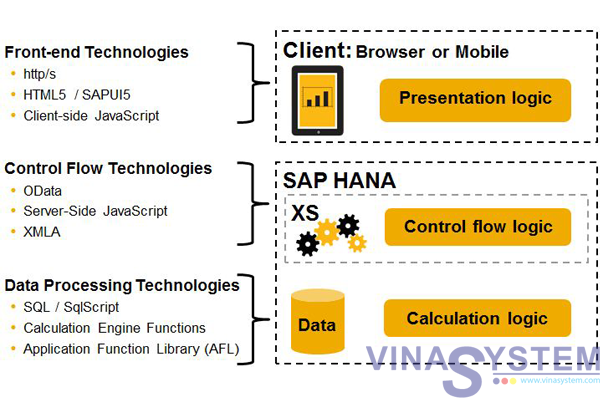
Create a Price List in SAP Business One - Create a Price List Overview
Welcome to the topic on creating pricelists, §In this topic, you learn how to create pricelists in SAP Business One.
I/ Business Scenario
Your company maintains multiple price lists to give appropriate pricing for different types of customers. Therefore you tie the price lists to customer groups. When a new customer master record is created, the price list defaults from the customer group assigned to the customer master.
You set some pricelists to update prices automatically when a base pricelist changes. For example, you base some sales prices on a pricelist based on purchase price.
Some price lists are seasonal so they are managed with validity dates. New price lists are marked as inactive until they are ready to be used.
II/ Pricelist Concept

SAP Business One uses price lists as the basis for pricing in the sales and purchasing process.
Price lists contain the pricing for items.
Each business partner has a price list assigned. You can see the assigned price list in the business partner master record.
When a business partner is entered into a marketing document, the price list is associated with the document. When you enter an item in the document, the price for that item is drawn from the price list associated with that document.
1/ Pricelists

SAP Business One provides 10 pricelists.
You can add, change or delete prices in these lists to manage your pricing strategy.
You can use all 10 pricelists, use just a few of them or create additional as needed.
2/ Ways to Create Price Lists

Most new SAP Business One customers will import the price lists they are using in their business. The price lists may be on spreadsheets or in a legacy system.
There are two main ways to import master data, the Import from Excel tool and the Data Transfer Workbench. These tools are covered in course topics on Data Migration Tools.
In this course topic we will focus on how to create individual price lists.
When you create a price list, you can enter the prices manually or base a price list on another price list so that prices are automatically updated when the base price list changes.
Let’s look at how this is done.
III/ Create pricelists
Inventory -> Price Lists -> Price Lists

Price lists are created and maintained in the Inventory module under the menu area for price lists.
To add a new price list, open the context menu by right-clicking and choose Add Row.
Then enter the name for your new price list.
In this example we are creating a new price list for customers who are schools.
You can control who is authorized to change the price list by using authorization groups.
1/ Base a price list on another price list

One useful option for price lists is to base a price list on another price list.
In our example, the price list for schools will be based on our base price list that we have previously set up.
We would like the prices on the schools price list to always be double the prices on the base price list.
We set the default base price list to be our “base price list”. We set a default factor of 2.0.
Each priced item on the base price list will appear a price set at 200% of the item price on the base price list. For example, if an item is price at 10 on the base price list, the same item on the schools price list will be priced at 20.
Anytime prices are changed on the base price list, the corresponding price on the schools price list is automatically updated so that the price is always double the base price.
2/Drill down to price details

You can double-click a row to open the price list to view and maintain the individual item prices.

Once you open a price list, you see all the items in the system and the prices assigned.
Here we see the Schools price list is based on the Base Price list.
The prices are calculated using a factor of 2.
Notice that the tablet currently has an automatic price calculation of 540 which is twice the base price of 270.
3/ Drill down to Unit of Measure (UoM) Prices

You can maintain prices for each unit of measure for an item that has an assigned unit of measurement group.
To set the unit of measure pricing, select the pricelist, then double-click the item row in the price list to open the Unit of Measure Prices window.
The base unit of measure will appear in the Unit of Measure Prices window but it will be grayed out. Its price is set in the price list window for items.
You have the option to add any units that belong to the item’s assigned unit of measure group to Unit of Measure Prices window and set their prices.
For more information on units of measure and how they are set up, see the e-learning courses on units of measure.
IV/ Maintain unit of measure prices

When you add a row for a unit of measure, the system automatically calculates the unit price for each unit of measure based on the unit of measure group definitions.
If you choose not to enter a unit and price for this price list, it is still possible to use that unit in a sales or purchasing document. A price for the unit used in the document will be calculated automatically based on the relationship of that unit to the base unit and its price.
One reason to add a unit of measure price in this window is that you can enter a different unit price or modify the unit price with a percentage discount or surcharge in the Reduce By Percentage column. The reduction or surcharge is calculated immediately and reflected in the unit price.
Select the Auto checkbox in the row if you want the unit of measure prices to be updated according to the discount reduction, whenever the inventory unit of measure prices are updated in the Price List window. If the Auto checkbox is not selected in the row, the unit of measure prices are not updated when you update the prices of the inventory unit of measure in the Price List window.
V/ Copy ‘Reduce By’ Percentages

Another nice feature in the unit of measure price window is that you can copy the Reduce By percentages to other items that share the same unit of measure group.
You can use the Copy Reduce By button to copy the percentages defined in the Reduce By % column for an item’s unit of measure prices to multiple items in multiple price lists as long as all the items belong to the same unit of measure group.
For example, if we had multiple types of copy paper, and we always give a discount of 5% on a 6Pack and 15% on carton, we could copy these discount percentages from one item to all others copy paper items with the same units of measure.
Note that the new button appears in the UoM Prices window only when you access the unit of measure prices from the item row in the price list. If you access the UoM Prices window from the item master data by choosing Browse, the new button is inactive.
VI/ Price Lists Validity

You can set a price list as inactive until you are ready to use it. A company can set up pricing in advance, and activate a price list when required.
You can also set a price list to be active for a specific date range. This allows companies to offer price changes for a limited period. The pricing will only be effective when the first validity date is reached. When the range is no longer valid, the price list becomes inactive.
If you use an inactive price list in a document, no pricing will appear. If a marketing document refers to an inactive price list, such as in an order for a customer associated with an inactive price list, the item price is zero and the unit price field is shown as empty in the document row. When you add a document associated with an inactive price list, the system will warn you about the zero price. If an active price list has a date range, then the document posting date must fall within the date range, otherwise the price list will be considered inactive. For other windows such as the item master data, the system date is used for the comparison with the price list date range.
A price list can be deactivated at any time, even if it is already assigned to a business partner.
VII/ Exact Pricing for Additional Currencies

For each entry on the price list, you can maintain up to 3 prices with different currencies (the primary currency and two additional currencies). This is useful when you want an exact price in a different currency rather than depending on the currency conversion done inside a document.
You can maintain the pricing in alternate currencies not only at the item level, but also for each unit of measure for an item.
The additional currency fields are hidden initially, but you can display them using Form Settings.
VIII/ System-maintained price lists

There are two price lists that are automatically created and you cannot maintain:
- The Last Evaluated Price list
- The Last Purchase Price list
The system maintains these price lists automatically.
The Last Evaluated Price List is automatically updated when you run the Inventory Valuation Simulation Report. This price is calculated only for the item’s inventory unit of measure and only in primary currency.
The Last Purchase Price is automatically updated when an item enters inventory with its original price.
These 2 price lists are grayed out in the Price Lists window because you cannot change these price lists.
IX/ Last Purchase Price Pricelist

Last purchase price is updated by: accounts payable invoices, goods receipts and goods receipt POs, inventory postings for initial quantities or adjustments for positive stock differences, landed costs documents and automatic calculation of last purchase price for bills of materials used in production. Canceling any of the documents will not affect this price.
If none of these actions listed in the graphic have been performed in the system for an item, the Last Purchase Price pricelist will not contain a price for the item.
You can base other price lists on the Last Purchase Price. You cannot, however, change the prices in the Last Purchase Price pricelist manually.
X/ Configuration Settings for Price Lists
Administration -> System Initialization -> General Settings -> Pricing Tab

There are a number of controls for pricing on the Pricing Tab in General Settings. These controls cover three main areas: inactive price lists, unpriced items and unit of measure pricing.
You can control whether prices are displayed in documents when a price source is based on an inactive price list for three types of prices. Three separate checkboxes control the display for special prices for business partners, period and volume discounts and price lists prices.
You also have the option to hide or display inactive pricelists in three areas: in reports, in sales, purchasing and inventory documents, and in settings. Each area has a checkbox that when checked tells the system to display inactive price lists for that area.
Some companies may have a large number of unpriced items that are neither sold nor purchased. Because every item by default appears on every price list, companies with a large number of items may wish to remove unpriced items from price list tables. By selecting this checkbox, all items with zero price will be immediately removed from the items table (ITM1). This will substantially reduce the size of this table and improve performance. Be aware that this action is not recorded in the log file, since there are no price changes. When the checkbox is selected there are no UI changes for the user. If the checkbox is subsequently deselected, all the removed items will be restored to the ITM1 table so they can be used in normal business operations. Note that no backup is needed before the restore is made. This checkbox is not relevant for the Last Purchase Price and the Last Evaluated Price pricelists. All items remain associated with these two price lists. Items with no prices are still displayed to users when they view the price lists. If you would like to view the price lists without seeing these items, choose the option, Hide Unpriced Items, in the Price list – Selection Criteria window. A similar option exists in price list reports.
Since unit of measure pricing is based on unit of measure groups and their rules for converting one unit to another, you may wish to have any changes in the relationship between the units affect your company’s prices. You have several options – to update prices accordingly, to remove the unit of measure pricing, to keep the corresponding unit of measure price, or to keep all prices unchanged. After making this choice, you have an additional option to set a checkbox that tells the system to remove or update unit of measure prices based on changes in the system maintained price lists: last purchase price and last evaluated price list.
XI/ Summary
Here are some key points:
- You maintain purchasing and sales prices in pricelists.
- There are 10 default price lists. You can define more.
- You can define prices for all pricelists except the two system maintained price lists: the last purchase price and evaluated price pricelists.
- You can maintain prices for each unit of measure for an item for an item’s assigned unit of measurement group.
- Every item is linked to every pricelist by default. However, you have the option to remove zero price items from all pricelists except the system maintained price lists.
- A pricelist can be based on another pricelist by using a factor. In this way prices can be automatically updated when the base pricelist changes.
- If a pricelist price is changed manually, it can no longer automatically change.
- You can set validity dates for pricelists or mark a pricelist as inactive. Configuration settings allow you to control where inactive price lists and their prices are displayed.






